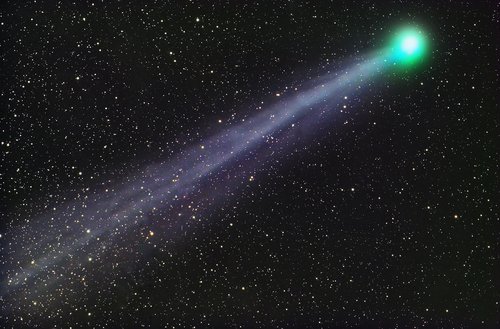Current Info for Observer
as of 04/26/2024 12:42 a.m.
Please login to view current observation details
General Info
as of 04/26/2024 12:42 a.m.
| Type | Comet |
| Constellation | None |
| Magnitude | 43.74 |
| Peak Magnitude | 4.13 (Jan. 11, 2015) |
| Orbits | Sun |
| Right ascension | 18:19:33.45 (Hours) |
| Declination | -8:44:47.5 (Deg) |
| Distance from Earth | 22.89898AU |
| Closest Approach | Jan. 7, 2015 (0.469AU) |
| Distance from Sun | 23.42096AU |
| Elongation | -120:10:40.3 |
Probably the best comet of 2014 | |
☉ Solar Masses ⊕ Earth Masses j Jupiter Masses
Naked eye
1 points
I never did go out and see it with a telescope, wish I did but I guess I'll wait for the next bright(ish) comet.
Opticron Imagic TGA WP 10x50
1 points
This was the second session with this comet. A combination of binos for visual and a bit of widefield photography to capture this comet (DSLR + iOptron Skytracker V2). Started by locating the comet with my binos and rigged the iOptron and DSLR after that. Wanted to get both the comet and the Pleiades in frame. This is my, so far, sixth observed comet.
Generate a finder chart
The following form will generate a PDF finder chart suitable for printing using to locate objects in the sky with your telescope!
The Date is only really useful for solar system objects, as deep space objects move measurably only on a galactic timescale.
The larger the F.O.V (field of view), the more "zoomed out" the object will appear. It can be helpful to print several charts of the same object with different field of views.
Limiting the magnitude (remember, lower magnitude means brighter!) of stars and objects can make sure your chart is not cluttered with dim objects that you may not be visible to you anyway. The defaults are good, but try experimenting with raising and lowering the values.
Please login to post comments

